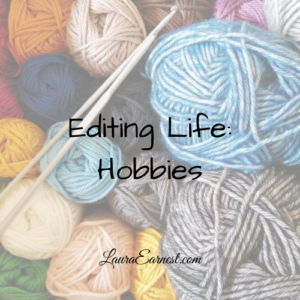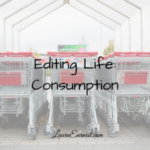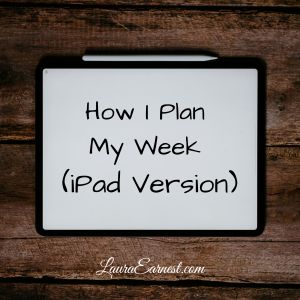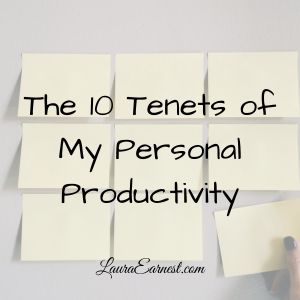I love my hobbies. Creativity is second nature to me, and I would spend my days making music, braiding, knitting, scrapbooking, doing calligraphy, spinning and writing if I could. Unfortunately, I can’t. I have financial and family obligations that preclude my full-time participation in hobbies.
In this time of the global pandemic I have found that I have more time to engage my hobbies. But what I also found is that some hobbies were not available due to closures and shortages, and that when it came right down to it, I wasn’t interested in some of the hobbies I have had on my lists for a long time.
Going forward, I want to make sure that the things I do in my spare time are meaningful to me. That means I need to edit my hobbies.
Why Edit Hobbies?
I have found that when I keep unfinished projects and unused equipment around, I end up with a perceptible drag on my mind. I see an unfinished project, and I start thinking about it – or worse – nagging myself to get back to it. I see unused supplies and I start thinking about what I have done with them in the past, and wonder why I don’t do them anymore.
Since the whole purpose of editing your life is to be deliberate about the activities you engage in, editing your hobbies falls right in line with this idea.
What Are Your Hobbies?
The first thing to do is make a list of all the outstanding hobbies. This should include things that you not only have projects in progress, but also those hobbies that you are keeping tools to do, even if you are not actively using them.
Here is my list and the state of each:
- Knitting. I have an unfinished project on the sticks. It has been unfinished for a couple of years. I also have several projects waiting in the wings, materials purchased.
- Crocheting. I am actively working on an afghan. I also have several projects waiting, materials already purchased.
- Scrapbooking. I have a box of papers to scan and years of photos to scrapbook.
- Noveling. I still have six (seven?) unfinished novels, one nearing the end of edits and dozens of ideas.
- Quilling. I have the tools for this, but haven’t don’t anything with it in years.
- Cross stitch. I have three projects underway, and several more waiting to be done. I haven’t done any stitching in months.
- Quilting. My husband bought me a quilt kit when I got the sewing machine. I have been working on the [insert expletive here] quilt for years.
- Gardening. I do this every year and mostly fail. This year I managed to produce a dozen radishes, a small dish of peas and some lettuce.
- Japanese braiding. I got hooked on this when I attended a quilt show with a friend. I have material on hand to make a lot of jewelry. I work on it in fits and spurts.
- Playing flute. Meh.
- Playing piano. Meh again
- Playing hurdy gurdy. I have to finish building it before I can play it. (Want to know more about what this is? This is what it is and this is what it sounds like.
- Calligraphy. I haven’t done this in years, but still have all the pens.
Consider Each One
There are two phases to editing hobbies: deciding about the hobby itself, and then looking at individual projects.
Consider The Overall Hobby
There are always going to be hobbies that get abandoned. Perhaps you have learned all you wanted to learn about a hobby. Maybe it no longer fits your lifestyle. Perhaps you have grown bored with it. Abandoning a hobby can be permanent, or you can take a break.
From your list of hobbies, consider those that you never want to do again. If you are decided that you will never do this again, get rid of the supplies. For me, quilting is at the top of that list. I never want to do anything with quilting ever again. So that means I got rid of all my fat quarters of fabric. I won’t get rid of the sewing machine, because it is necessary for things I make for the house. But anything directly related to producing more quilts is out the door.
If you are pausing a hobby, you will need to look at how much it would take to replace your equipment should you choose to take it up again. If it is too much and you are sure that you will pick it up again, as well as considering the space it takes, you can hang onto the equipment. For me, playing the flute and piano, quilling and calligraphy fall into this. I know I will pick up flute again (I have gone through dry spells before). The piano is used by others in the house. And my materials for quilling are specialized and hard to replace, taking up very little room, so they sit in a check box in a drawer. Scrapbooking also falls into this category, but since I only do digital scrapbooking, and have one box of non-digital material waiting to be scanned, this is OK.
The rest of the hobbies I want to remain active. But the outstanding projects….oh my.
Considering the Projects
Wow. I have a lot of UFOs (UnFinished Objects). That is a direct result of my being a good starter…and a terrible finisher.
For each of these hobbies, I sat down and made a list of all my UFOs. Then I set about ranking them, with the thought that I would work at one until it was finished, and then move onto the next. No starting any more projects until the list was clear.
That is really hard. But I’m trying.
There have been times when I have abandoned a half-done project. In my younger days, I started a gorgeous cross stitch piece. It was huge, and had to be done across threads of linen. Each color was carefully blended with one strand of one color and one of another. I just couldn’t work on it. It was too much. And even though I was almost half done, I pitched that sucker in the trash, and moved on.
I don’t currently have any projects that I am willing to throw out. But I have to have a plan for the UFOs. So that list I made? I threw it in a spreadsheet, and ranked them. I took into account how close to done it was, hours to complete, and the irritation factor. This gave me a list to work from. And I have been steadily working on the list.
A Word About Stashes
Many habits lend themselves to building up a stash of material. My stashes were of fabric and yarn. My husband’s are of wood (he is a woodturner). My daughter has a stash of duct tape.
But a stash, without a specific use in mind, is just clutter.
Stashes are hard to bust. But remember: they are sunk costs.
My good friend came over one Saturday and we went through my stash. We went through every box, basket and drawer. She had me get rid of all yarn that didn’t have a pattern waiting for its use. She made me get rid of all my old sewing patterns and any fabric that was leftover from a project. And then she made me get rid of the basket of dishcloth yarn. Because I really don’t need any more dishcloths. The end result? I can enter my guest room without freaking out about all the stuff waiting for me.
If you have a stash, ask a friend to help. And see if you can get it down. Because you are never going to use it. I see far too many young people who are saddled with the stashes of their dead relatives. Don’t do that to someone else.
Over To You
How many hobbies do you have? Are they all active? Are you hanging onto materials for a hobby you will never do? Do an edit and see if you can streamline this going forward.







